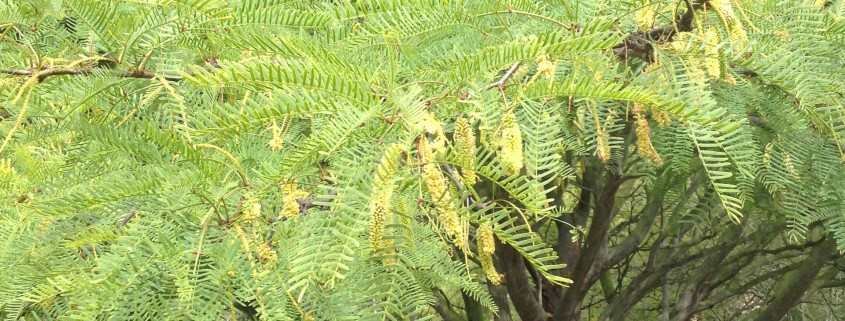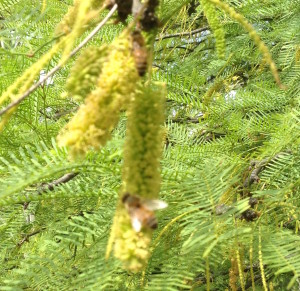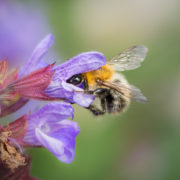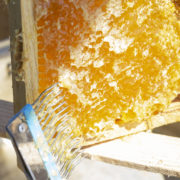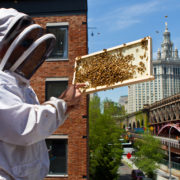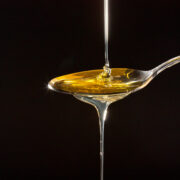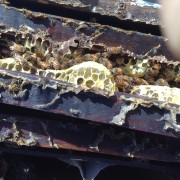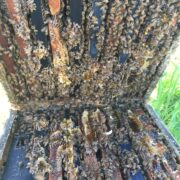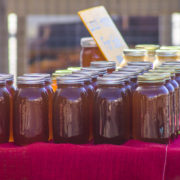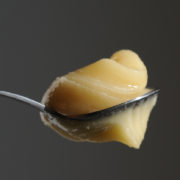Mesquite Honey
During late April and early May, long after many desert wildflowers have run their course, desert mesquite blooms. Mesquite flowers form a long pod of yellow blossoms. One of the most common desert mesquite trees is called the “honey mesquite.” (As a beekeeper, you know you are on the right track when a plant has the word “honey” in its title!) Honey mesquite is found throughout the Southern United States, especially in the deserts of California, Arizona, New Mexico and Texas.
At Wildflower Meadows, we are fortunate to have several giant mesquite trees right along side our queen rearing apiary. Because we are not exactly located in a desert, our mesquite trees bloom later in the season, usually in early June. The mesquite nectar and pollen provide a timely boost to our summer queen rearing efforts.
Mesquite honey is a light, mild-tasting honey, and very delicious. This honey crystalizes more quickly than perhaps any other, at times seeming to crystalize virtually overnight. This is why if you look for raw mesquite honey on the Internet, nearly all of the pictures show it in crystalized form. Commercial beekeepers have to pay extra attention to not let mesquite honey cool when extracting it. Mesquite honey has been known to actually crystalize during the middle of extracting, leaving the beekeeper with solid honey stuck inside the piping and tanks! When it is in its liquid form – which is almost never – raw mesquite honey has a thick, almost chewy texture.

